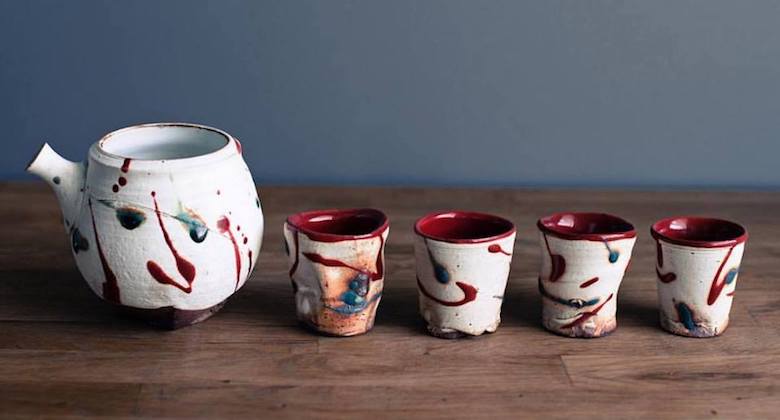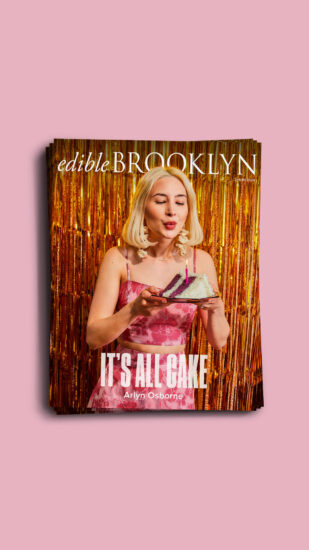https://www.instagram.com/p/BOXgzibDHlh/
Tea ceremony in Japan traditionally requires dozens of utensils, from special ash-burning pots and silk cloths to more familiar bamboo tea scoops and chasen (tea whisks). Then there’s the tea bowl (chawan), which Stefen Ramirez of Williamsburg’s Tea Dealers likes to focus on for its combination of beauty and all-round utility.
Ramirez hopes to distill the essence of chado—or the way of tea—for busy, culture-seeking New Yorkers. “Tea ceremony needs to come alive in order to touch more people,” he tells me at a koicha workshop one early autumn night, where we learn how to make thick matcha at his gorgeously decked-out nook in the 1 OR 8 restaurant on the corner of South 2nd Street and Wythe. Handmade tea bowls and a few ikebana (flower) vases line spare driftwood shelves above the bar.
https://www.instagram.com/p/BNSmvffjS1G/
Ramirez has developed relationships with select tea growers in Japan over the last decade, as well as potters who make teaware according to centuries-old Japanese tradition. He’s used to scouting out national treasures for private clients but also enjoys “finding new waves of third-, fourth-, fifth-generation ceramicists or older, who come from well-established pottery-making families and are putting their own spins on practices that stretch back to feudal times. “The bowls and cups I carry at Tea Dealers aren’t necessarily museum pieces,” he says, “but they all bring a rich history to everyday tea-making at home.”
He’ll talk with customers for hours about the clay used for each bowl, the firing and glazing techniques that create certain effects, and how it all dates back centuries to specific regions in Japan and the country’s six ancient kilns. “I consider myself an ambassador of the potters making this teaware,” he adds, “and want to make sure I’m bringing their traditions to light in an authentic way.” Among the one-of-a-kind pieces available from his shop—both in person and online—are bowls from 14th-generation pottery rockstar siblings Hanako and Taki Nakazato, whose father was a national ceramics legend. You can also get a teapot from the late great Tashiro Seijiemon XV (decorated with a 17th-century horse design) that Ramirez was lucky to snag on one of his annual research trips, or distinctive Iga-made bowls that evoke a completely different time, even other galaxies.
https://www.instagram.com/p/BM6iDEchoU4/
Zach Mangan of Kettl is also eager to inspire a love for age-old Japanese teaware in a streamlined, modern setting. His hidden pop-up shop above Brooklyn’s Okonomi became a full-blown retail gallery this fall, where people can stop in, have a cup of tea and see and feel the ceramics in person. “These aren’t just pieces you put on the shelf,” Mangan says. “It’s about finding a pot, cup or bowl that you love—something you’ll use again and again and appreciate every day,” he continues. “You have to see it with your own eyes and hold it in your own hands.” One aspect of using tea bowls in traditional Japanese ceremony, adds Ramirez, is the experience of noticing new details in an old cup or bowl with repeated use—the little chips, cracks and bubbles that make each piece unique. It’s the essence of the untranslatable but hugely important cultural Japanese concept of wabi-sabi about embracing imperfection in daily life.
Kettl’s newly expanded gallery space features teaware from Japanese design studios, including a line of teapots made in ancient Tokoname, alongside select artists like local potter Jordan Colón, whose wares are crafted with New York materials and used to serve kaiseki-like fare at Okonomi. Mangan envisions the Kettl shop as an educational center where avid tea drinkers and novices alike can swing by with questions and learn about different artists, regional materials and the history of various firing and glazing methods. He plans to offer a range of programs in 2017 on the heels of the studio’s grand opening meet-and-greet pottery fair with Hanako Nakazato this past November. “Tea and teaware inform each other in a constant process of appreciation,” says Mangan. You might get just one bowl or cup to use for many years (think New Year’s splurge) and then refill it with tea harvests as they come in throughout the seasons.



